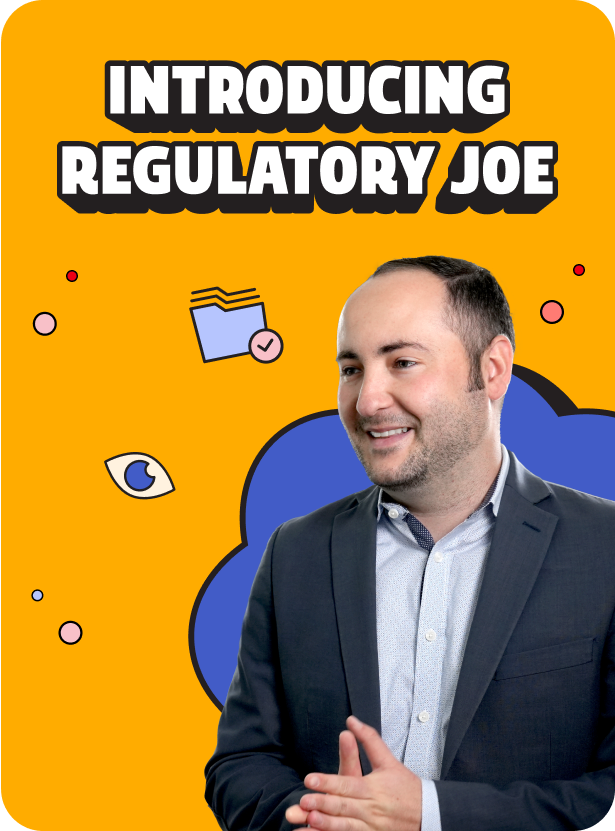See this article by Penstock president of regulatory solutions Joe Boyle as it originally ran in SaaSMag.
The regulatory landscape is a maze of evolving requirements, tight deadlines and intricate state and federal mandates. For companies operating in regulated industries — whether in healthcare, insurance or finance — compliance isn’t just a box to check. It’s an essential part of doing business. However, the process can be time-consuming and prone to errors, often involving outdated systems and manual workflows.
Organizations across sectors are facing mounting pressure to modernize their approach to regulatory filings in a way that maintains accuracy while increasing efficiency. As the regulatory environment grows more complex, automation and purpose-built solutions are emerging as critical tools for streamlining compliance processes.
By providing a user-friendly, automated solution, a regulatory SaaS platform can enable businesses to efficiently navigate the complexities of regulatory filings. However, the regulatory landscape is highly specialized and requires a nuanced approach tailored to its unique challenges.
The need for automation in the regulatory space
Regulatory filings have long been plagued by inefficiencies. For example, tools like the System for Electronic Rates and Form Filings (SERFF) and Health Insurance Oversight System (HIOS), which are widely used for insurance filings, are often labor intensive. Updates are poorly communicated, and information is buried within the system, often putting critical deadlines at risk of being missed. These issues can lead to penalties, compliance gaps and missed opportunities for growth.
Having worked in this field for many years, I’ve experienced these challenges firsthand and recognized the glaring lack of solutions to address them. I created ClearFile, a SaaS platform designed to simplify regulatory compliance for health plans by automating key tasks, reducing errors and providing real-time tracking for filings.
ClearFile seamlessly integrates and simplifies complex key functions like plan management configuration, unique state-specific and federal requirements, and submission workflows into a unified system. It increases speed to market, reduces re-work, optimizes downtime and enables organizations to meet tight regulatory deadlines with confidence.
While originally designed for the healthcare industry, its flexible architecture and core principles make it a powerful solution for any sector where compliance is essential.
A foundation of expertise
There’s nothing quite like that first SaaS sale — when a perceived market need is validated, and your creation begins making a real impact. But success in regulatory software isn’t just about the product. It’s about the expertise behind it.
In industries like healthcare, where compliance is complex and turnover is high, deep institutional knowledge is critical. A regulatory SaaS isn’t just a tool — it’s a way to capture and scale expertise that might otherwise be lost.
That’s why our journey began long before our first sale, rooted in a deep understanding of compliance with the Affordable Care Act. With more than 1,750 filings across 25 states since the ACA’s inception, our team brings unparalleled experience to the table. ClearFile was built to transform that expertise into a scalable, automated solution — because in regulatory SaaS, success isn’t just about building software but about embedding the right knowledge into it. Understanding the core SaaS metrics that influence company valuation is just as crucial for founders building long-term SaaS businesses.
Broadening the platform’s horizons
As we worked with clients, it became evident that our platform’s applications extended well beyond ACA compliance. While its architecture had the potential to support a broader range of regulatory processes, expanding in that direction required more than just a willingness to adapt — it demanded strategic investment, disciplined decision making, and a deep understanding of both technology and compliance.
Scaling a SaaS solution in the regulatory space isn’t just about adding features. It’s about anticipating client needs before they arise, ensuring flexibility without sacrificing focus, and continually refining the platform to maintain its competitive edge. In a rapidly evolving SaaS landscape, standing still is not an option. Innovation isn’t a luxury — it’s an expectation. That often means making tough calls about resource allocation, technology investments, and the delicate balance between customization and scalability.
For ClearFile, expanding capabilities required significant investments in platform flexibility, task automation, and state-specific compliance monitoring. These enhancements weren’t just about adding functionality. They unlocked new growth opportunities by transforming the way clients engaged with the platform. As more SaaS companies integrate automation and intelligence, it’s helpful to consider how AI-based businesses are valued in today’s acquisition environment. Instead of viewing ClearFile as a single-use solution, they began asking, “How else could we use this?” That shift — from a narrowly defined tool to a versatile regulatory solution — was a pivotal moment in our evolution.
Pace yourself, scale appropriately
New growth opportunities are exciting, but they come with a challenge: knowing when to say no. In SaaS, it’s tempting to accommodate every client request, especially when expansion feels like the logical next step. But not every enhancement aligns with your long-term vision.
That raises an important question: How do you prioritize? Should decisions be based on convenience and what’s easiest for the quickest sale? Should they center on the needs of current clients and their willingness to pay for a new service? There’s no universal right or wrong answer — only the approach that best fits your company’s vision, strategy and growth trajectory.
Flexibility is crucial, but too much flexibility can dilute your product’s value. The best SaaS platforms balance adaptability with strategic focus. Accommodate, iterate and evolve — but always with a clear vision in mind. At the end of the day, your team built this platform for a reason. Clients hire you for your expertise, and maintaining that leadership requires the confidence to draw a line in the sand when necessary.
The value of feedback and mentorship
Being a subject-matter expert and doing the work is very different from running a business. You can excel in one and struggle in the other. Many SaaS entrepreneurs are great at solving complex industry problems but underestimate the challenges of building and scaling a company. That’s where mentorship comes in. A coach or mentor can provide the strategic guidance, perspective and business acumen that technical expertise alone can’t replace. Harvard Business Review outlines the key benefits of mentorship for early-stage founders.
Surrounding yourself with experienced founders, asking the right questions, and absorbing their insights can be just as valuable as any formal education. And for many first-time entrepreneurs, the absence of a boss — while liberating — can also feel like an immense weight to carry, especially in the early days of a venture. Having trusted advisors to lean on can make all the difference.
Just as mentorship shapes leadership, client feedback shapes product development. Early input from users helped refine ClearFile’s most impactful features, including real-time alerts, task management, and pre-loaded templates. Building for the user — rather than assuming their needs — was a game changer. That doesn’t mean saying yes to every request, but it does mean listening, iterating and ensuring your platform delivers real value.
Perhaps the most important lesson? Don’t build in a vacuum. Having your first client secured before launching can provide invaluable insights and steady revenue from day one. Early partnerships not only validate your concept but also create a foundation for long-term success. Working closely with that initial client to solve problems and navigate industry shifts sets the stage for a scalable, sustainable business — one that grows not just on great technology but on the trust and collaboration that define truly impactful SaaS solutions.









